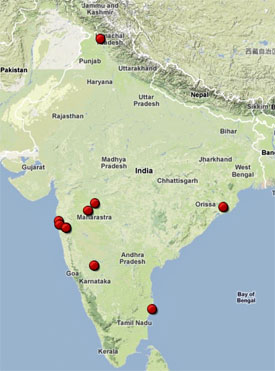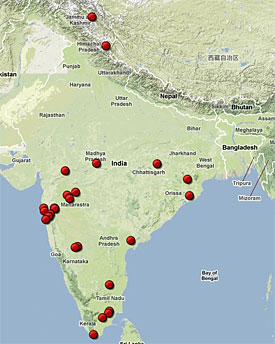World 🢖 Asia 🢖 India 🢖 Karnataka
Hindu shrines 🢔 Religious architecture 🢔 Archaeological wonders 🢔 Categories of wonders
Wonder
Badami Cave Temples
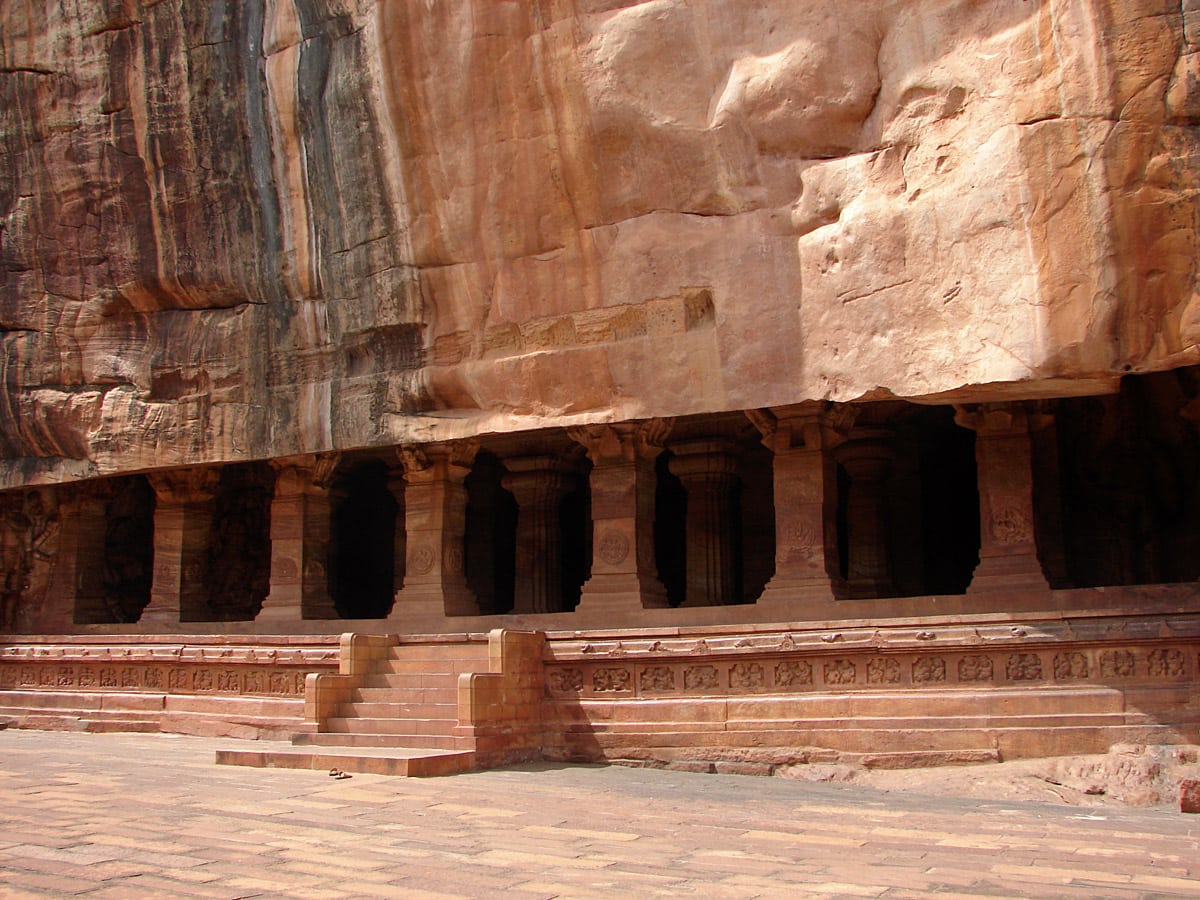
 In short
In short
The first ruler of the Early Chalukya dynasty, Pulakesi I established a new capital for his kingdom sometime around 540 AD. This city was located at the mouth of a steep ravine and initially was named Vatapi. Nowadays it is known as Badami.
 45.3%
45.3%
GPS coordinates
Location, address
Writing in Kannada
Age
Religion
Map of the site
If you see this after your page is loaded completely, leafletJS files are missing.
 In detail
In detail
Great kingdom needed outstanding sanctuaries. Badami Chalukyas built Badami Cave Temples – some of the most exquisite Indian rock-cut temples.
The water flowing from the ravine in Badami is gathered in an ancient artificial lake – Agastya tirtha reservoir. High above the water, there are towering cliffs of comparatively soft sandstone. Royal shrines were made in these cliffs with a grand view opening over the former capital city.
The four cave temples of Badami were built by the son of Pulakesi I – Kirthivarman (ruled in 567 – 598 AD) and his brother Mangalesha I (ruled in 598 – 610 AD).
One cave is devoted to Shiva, two – to Vishnu. The fourth cave is the Jain temple. Thus Chalukyas, just like several other successful dynasties of Ancient India, demonstrated religious tolerance.
Although in many respects these structures repeat the architecture of similar Indian cave temples created before, there is noticeable also the development of distinct style in architecture and art – Chalukyan style. Art of Badami shows influence both of South Indian styles (Dravidian style) and northern influences (Indo-Aryan Nagara style).
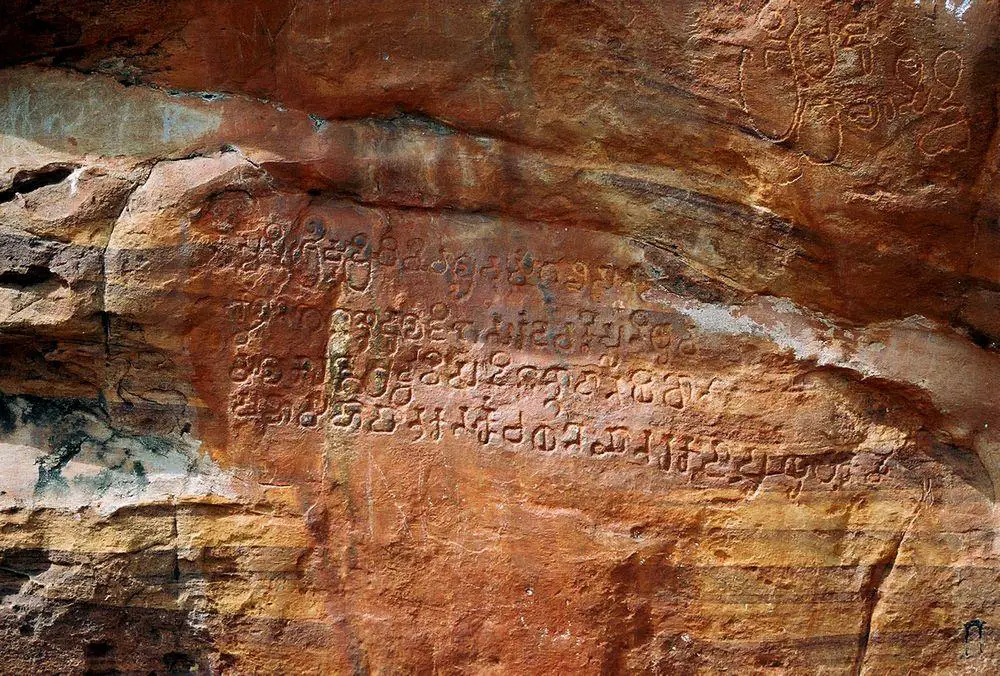
Badami Cave Temples have a simple exterior but their interiors have a very ornate finishing. The entrance leads through a pillared verandah – mukha mandapa, pillars have the square form in section. Three caves are adorned with a lavish frieze below the columns. The main hall of each temple – maha mandapa – is standing on massive columns. The furthest part of the temple behind the main hall is the shrine – cella or garbhagrha. Most likely caves were covered with exciting murals – only traces of this former beauty remain.
An important feature of Badami Caves and their surroundings is ancient inscriptions in Kannada writing and in Kannada and Sanskrit languages. In total, in Badami, there have been found 18 cliff inscriptions. The oldest is from 543 AD.
One of the most important inscriptions is made in 700 AD at the northeast end of the reservoir. It consists of ten lines in Kannada writing, both in Kannada and Sanskrit languages. This inscription is not completely clearly translated but it is clear that it goes about Kappe Arahatta, a local saint and hero. Under the inscription, there is a nice carving of ten leaved loti in a circle.
There exists also the fifth cave in Badami – a natural cave used as a Buddhist temple. It can be entered only on all fours. The area contains also many other temples.
Cave 1
This cave most likely is the oldest – it was constructed in 575 – 585 AD.
The entrance portal can be reached by 40 steps and contains four freestanding square columns and two semi-columns. Below the columns there is a frieze with ganas – attendants of Shiva.
The main hall contains pillars and a square-shaped shrine at the back wall. The ceiling is adorned with murals of amorous couples miraculously preserved for more than 1,400 years.
The cave is adorned with exquisite reliefs, the most impressive ones include a group with Shiva and Parvati with a coiled serpent as well as a unique monument of art – 18 armed Nataraja, which, when closely observed, strikes 81 dancing poses.
Cave 2
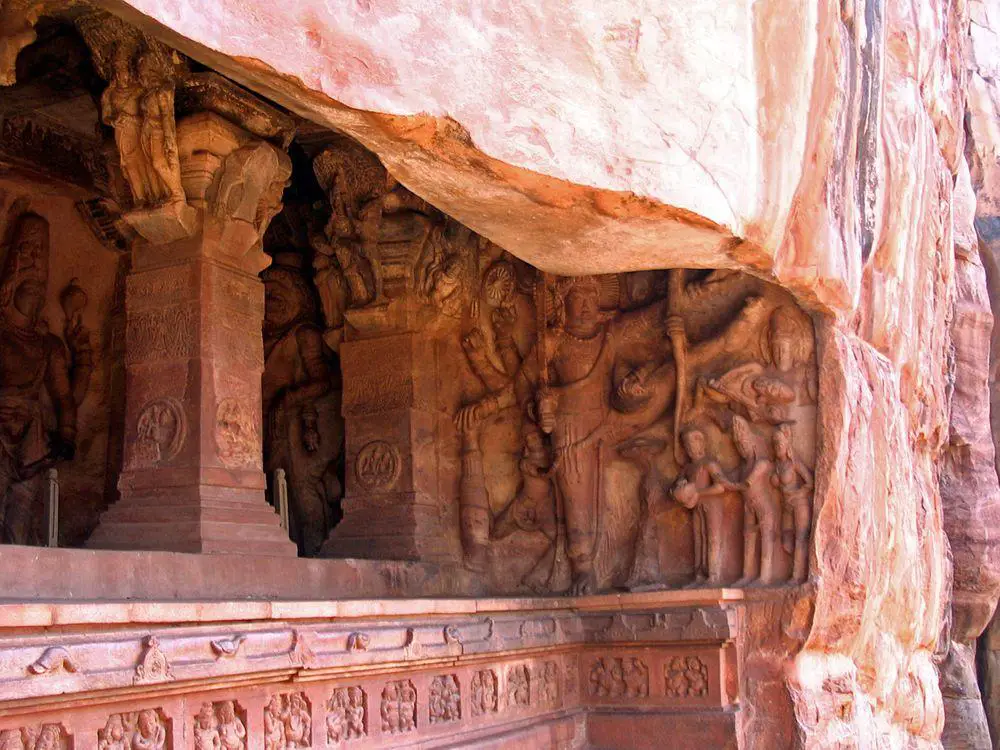
Created in the late 6th century AD and dedicated to Vishnu who is shown here as Trivikrama – with one foot on Earth and another – directed to the north. Vishnu in this temple is represented also as Varaha (boar) and Krishna avatars.
The cave is reached by climbing 64 steps from the first cave. The entrance is adorned with reliefs of guardians (dvarapalas) with smaller female attendants shown.
Cave 3
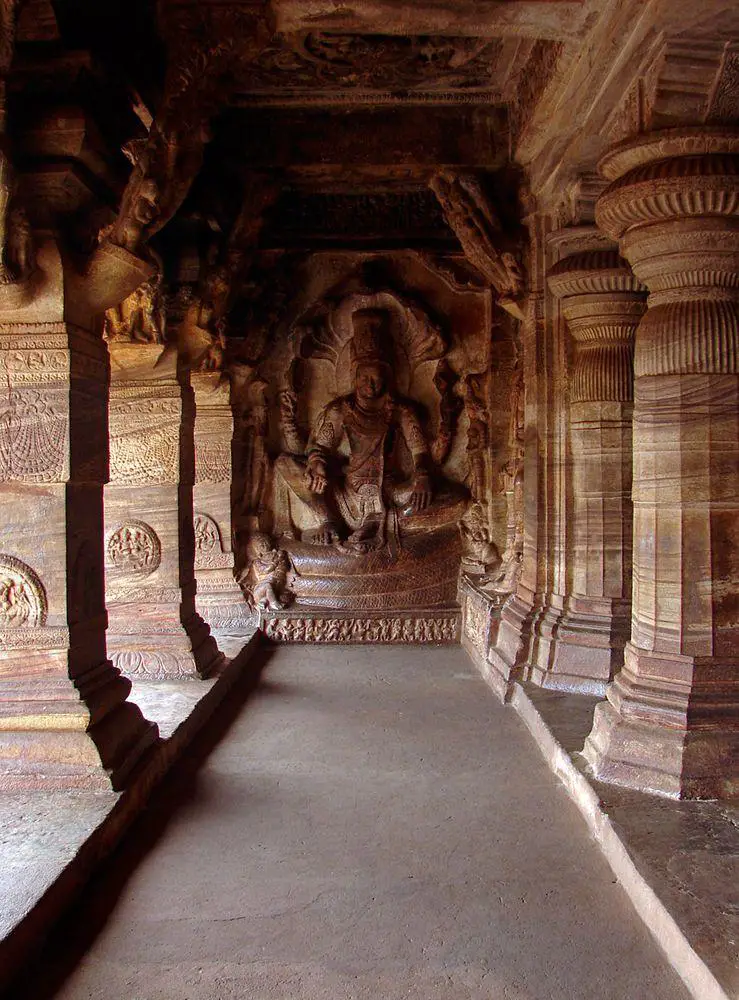
The largest and most renowned cave temple in Badami most likely is created in 578 – 580 AD. The cave contains an inscription by later Chalukya king Mangalesa in Kannada – he organized an excavation of this Vaishnava temple. The inscription has been made in 578 AD, Mangalesa became a king in 597 and ruled until 609 AD. It is common that Indian cave temples were patronized by influential members of royal families.
The rock-cut temple has a north-south orientation. The main hall together with verandah goes up to 14.5 m deep into the mountain, shrine makes the cave some 4 m deeper. The height of the main hall is approximately 4.5 m.
The cave is reached by climbing 60 steps from Cave 2. The facade of the temple is approximately 21 m wide and is adorned with a row of six massive columns. Below the columns, there is a frieze consisting of 30 smaller reliefs of ganas.
The whole cave is covered with magnificent adornments, including paintings on the ceiling. The centerpiece of these murals is four-armed Brahma on his swan. On the floor below the mural of Brahma, there is a lotus medallion – a place where offerings were laid.
Significant monuments of Indian art are the numerous reliefs of Vishnu including standing Vishnu, Vishnu with a serpent, Vishnu as Narasimha (half human – half lion), Varaha, Harihara, and Trivikrama avatars. Reliefs are 4 m high.
Art in cave 3 provides important information about the culture and clothing in this region in the 6th century.
Cave 4
This is the only Jain temple in the complex and the newest cave in the complex, made in the late 6th century – 7th century AD. It is located higher than other caves. If compared to the three previous caves, this cave is less elaborate and smaller – but still beautiful and rich with adornment. It contains a carving of the Tirthankara Parshavnatha with a serpent at his feet. Here is located also a sculpture of Jain saint Mahavira in seated pose (often mistaken for Buddha) and standing Gomatesvara with creepers twisted around his legs.
References
- Badami (Western Chalukya), Old Stones: The Monuments of Art History. Last accessed – 11th July 2018.
- Early perfection., Frontline, India’s National Magazine. Dec 08-21, 2007. Last accessed – 11th July 2018.
Badami Cave Temples are included in the following lists and articles:
 Linked articles
Linked articles

Wonders of India
India is the seventh-largest country in the world by area, and, naturally, such a large area contains a huge amount of exciting attractions…
Wondermondo considers that India is the second richest center of architectural heritage in the world after Europe and maybe no single country in the world can match it in this respect.
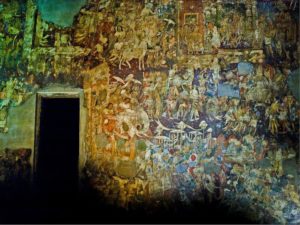
Encyclopaedia of ancient Indian cave paintings
A rich cultural heritage spanning thousands of years, Indian art’s origins can be traced back to Indian cave paintings and rock-cut structures that reflect the ingenuity and skill of their masters.
Wondermondo in alphabetic order has listed the best known of the famous Indian cave paintings.
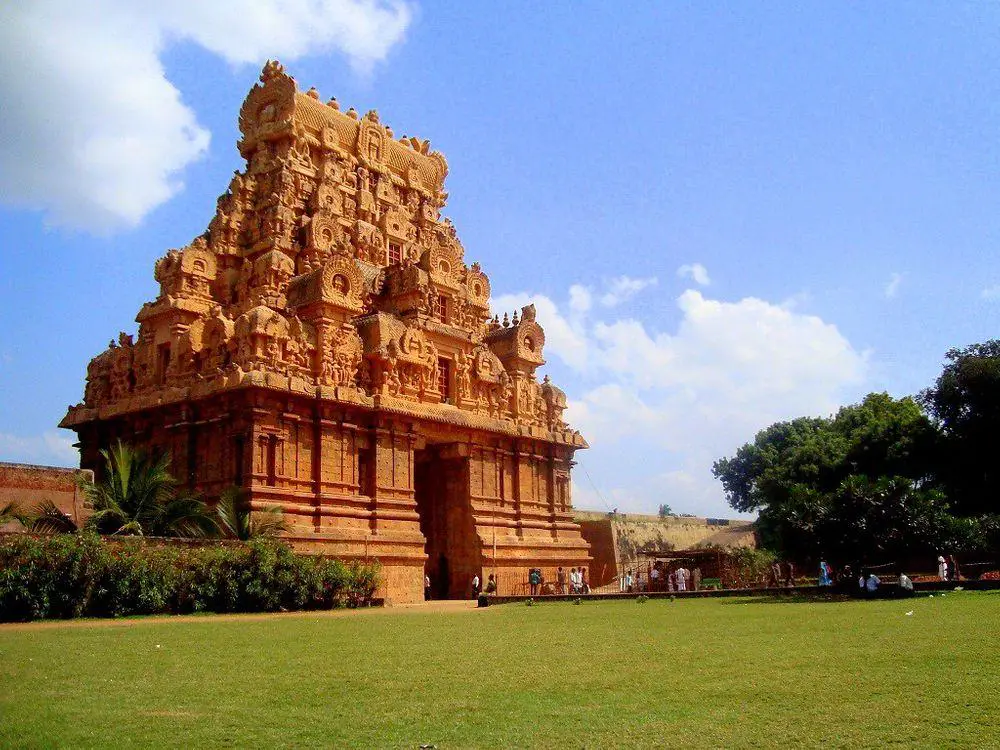
Hindu shrines
Hinduism is one of the oldest religions – possibly the oldest one among contemporary religions and Hindu temples belong to the most impressive religious buildings in the world.
 Recommended books
Recommended books
Temple Architecture and Art of the Early Chalukyas
The temples of the Early Chalukyas, dating from the 6th to 8th centuries, are unrivaled in all of India for their comparatively early date and unusually complete condition, the remarkable juxtaposition of their different constructional techniques and building styles, and for the sheer beauty of their figural and decorative carvings. In spite of their appeal and outstanding historical significance, these monuments have until now lacked an adequate publication.
India: The Ancient Past
India: The Ancient Past provides a clear and systematic introduction to the cultural, political, economic, social, and geographical history of ancient India from the time of the pre-Harappan culture nine thousand years ago up until the beginning of the second millennium of the Common Era. The book engages with methodological and controversial issues by examining key themes such as the Indus-Sarasvati civilization, the Aryan controversy, the development of Vedic and heterodox religions, and the political economy and social life of ancient Indian kingdoms.

